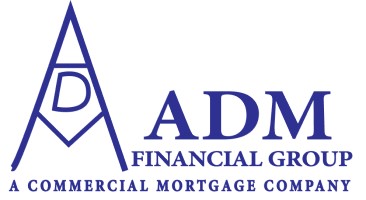Thanks for checking out my 5-day crash course on:
**HOW TO GET APPROVED FOR A COMMERCIAL MORTGAGE**
My goal for this course is to provide you with new techniques, approaches, knowledge and show you the best way for getting approved for commercial mortgage financing, while keeping them as actionable and succinct as possible.
And today, we start with a look at…
**WHAT IS A DEBT SERVICE COVERAGE RATIO (DSCR)?**
Debt Service Coverage Ratio
The most important ratio in all of commercial mortgage underwriting is the debt service coverage ratio. The debt service coverage ratio is defined as the Net Operating Income (NOI) divided by Annual Debt Service on the proposed loan. Debt service is just a fancy word that means the loan payments. When you are computing a debt service coverage ratio, you should not include taxes, insurance or reserves in the debt service number; i.e., you don’t use PITI. The debt service number in the denominator just includes principal and interest. The debt service coverage ratio is normally expressed as two digits to the right of the decimal point; e.g., 1.27 or 1.18.
Debt Service Coverage Ratio = Net Operating Income / Annual Debt Service
In plain English, most commercial lenders want the net rental income of the subject property alone to be able to carry the new mortgage payments. They also insist on a sizable cushion, just in case the owner experiences higher than normal vacancies or higher than normal expected expenses. On a fairly standard deal – let’s say a small shopping center in an average area – most commercial lenders will insist on a 25% cushion. More precisely, they insist on a 1.25 debt service coverage ratio.
Example:
In the calculation below, the property generates a net operating income (NOI) of $100,000 per year. The lender will therefore limit the size of his new commercial loan to one whose debt service (payment) is no more than $80,000 per year.
Debt Service Coverage Ratio = Net Operating Income / Annual Debt Service = $100,000 / $80,000 = 1.25
The more uncertain the property’s net income, the larger the cushion that a commercial lender will want. For example, most commercial lenders want a debt service coverage ratio (DSCR) of at least 1.40 on hotels. If the property is leased by Apple Computers for 20 years on a triple-net basis, a commercial lender might be satisfied with a debt service coverage ratio as low as 1.05.
The bottom line is..a lender wants to make sure that the property will pay for it;s self and the borrower is not coming out of his/her pockets to make sure the loan gets paid on time. If a DSCR is 1.00 that indicates that the property is breaking even. No lender will approve a loan that is just breaking even,
PLEASE REVIEW THIS WHITE PAPER to get more information on what ADM Financial Group can do for you.
This email course will provide you with actionable tips on how you can:
MAKE SURE YOU WILL QUALIFY …More on that later…
Tomorrow, we’ll be delving into:
HOW MUCH CAN I AFFORD?
If you have any questions in the meantime, please hit the reply button and drop me a line. I will respond personally to every email.
**JOKE OF THE DAY**
TIE JOKE
An Englishman, a Scotsman, an Irishman, a Latvian, a Chinese, a Japanese, a Kiwi, a Canuck, an Eskimo, a Fijian, a Turk, an Aussie, a Yank, an Egyptian, a Spaniard, a Mongolian, a Tibetan, a Pollack, a Mexican, a Spaniard, a Greek, a Russian, an Estonian, a German, an Indian, an Italian, a Brazilian, a Kenyan, a South African, a Filipino, a Pakistani, a Korean, an Argentinean, a Lithuanian, a Dane, a Finn, a Swede, an Israeli, a Romanian, a Bulgarian, a Serb, a Czech, a Croat, and a Panamanian go to a fancy bar… The bouncer looked at them a said…”I’m sorry ..I can’t let you in without a Thia”..



